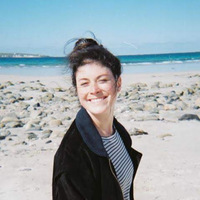Elizabeth DeYoung
Northeastern University, Accounting and Finance, Undergraduate
This paper explores the evolution of parading in civic space in Belfast, Northern Ireland. I draw upon previous ethnographic study of the Twaddell Avenue protest camp as an example of spectacle and resistance in public space. This camp,... more
This paper explores the evolution of parading in civic space in Belfast, Northern Ireland. I draw upon previous ethnographic study of the Twaddell Avenue protest camp as an example of spectacle and resistance in public space. This camp, sometimes referred to as a 'civil rights camp' or 'protest camp', is the product of ethnosectarian division and ongoing contestation around space in Northern Ireland. This camp, and the act of parading around which it revolves, appropriates public space as an expression of identity, territory, and collective memory. It also provides a lens with which to examine broader social, political and economic issues facing post-ceasefire, post-industrial Belfast.
This paper explores the evolution of parading in civic space in Belfast, Northern Ireland. I draw upon previous ethnographic study of the Twaddell Avenue protest camp as an example of spectacle and resistance in public space. This camp,... more
This paper explores the evolution of parading in civic space in Belfast, Northern Ireland. I draw upon previous ethnographic study of the Twaddell Avenue protest camp as an example of spectacle and resistance in public space. This camp, sometimes referred to as a 'civil rights camp' or 'protest camp', is the product of ethnosectarian division and ongoing contestation around space in Northern Ireland. This camp, and the act of parading around which it revolves, appropriates public space as an expression of identity, territory, and collective memory. It also provides a lens with which to examine broader social, political and economic issues facing post-ceasefire, post-industrial Belfast.
